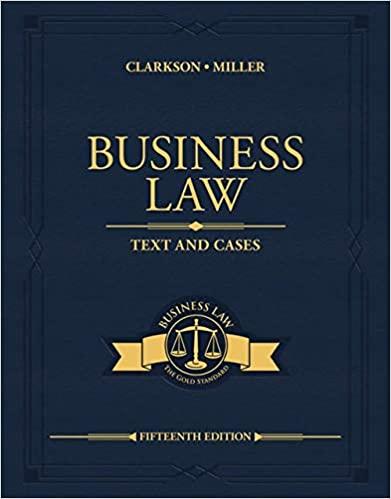Question
Creditors Liability Under the CCA 1974: Various case law regarding creditors liability in relation to the Consumer Credit Act 1974 has influenced the developments of
Creditors Liability Under the CCA 1974:
Various case law regarding creditors liability in relation to the Consumer Credit Act 1974 has influenced the developments of the statute by illuminating the scope of creditors liability.
It was seen in Office of Fair Trading v Lloyds TSB Bank Plc[1]that section 75 is still applicable in instances of credit transactions conducted abroad. Regardless of where a transaction occurs, if the credit card agreement was agreed upon in England between an English resident and an English card issuer, said agreement is governed by English law and subject to section 75 of the 1974 Act[2]. While it may be difficult to impose liability on a foreign supplier, the credit card company is still subject to liability through section 75[3]. As such, this case established the principle for creditors liability in an abroad instance.
Creditors liability was affirmed to be applicable in instances of hire-purchase agreements in Porter v General Guarantee Corporation[4]. This may have a negative influence as it is stipulated that section 75 is not applicable for in hire-purchase, conditional sale and credit sale agreements[5]. However, as seen in United Dominions Trust v Taylor, section 75 is applicable in loan contracts if it is a regulated debtor-creditor-supplier agreement[6]. It was held that a "like claim" was applicable under section 75 to rescind the loan agreement, yet in Durkin v DSG[7]Retail, it was confirmed by the Supreme Court that a like term should refer to a debtor who has the right to action in instances of misrepresentation or breach of contract by the supplier, by which the creditor is subsequently liable[8]. As such, claims must be in relation to the supply; use of s.56 would have been applicable in said situation[9].
[1]Office of Fair Trading v Lloyds TSB Bank Plc [2008] 1 All ER 205
[2]Rob Stoker, Commercial Law (10th edn, Sweet & Maxwell 2022), pg 443
[3]Ibid.
[4]Porter v General Guarantee Corporation [1982] R.T.R. 384.
[5]Rob Stoker, Commercial Law (10th edn, Sweet & Maxwell 2022), pg 443
[6]United Dominions Trust v Taylor [1980] C.C.L.R. 29.
[7]Durkin v DSG [1980] C.C.L.R. 29.
[8]Rob Stoker, Commercial Law (10th edn, Sweet & Maxwell 2022), pg 443
[9]Ibid.
Respond to the above post using OSCOLA referencing. You may address aspects which include the following:
Consider the application of section 75. Consider the position prior to the establishment of the Act. Consider the reason for establishing the CCA and aspects relating to creditor's liability which have proved difficult to interpret. Assess the different cases on creditor's liability and how they have influenced the development of the statute. It should be based on UK law. Consider whether the law offers protection for debtors and how the law balances the interest of creditors.
Step by Step Solution
There are 3 Steps involved in it
Step: 1

Get Instant Access to Expert-Tailored Solutions
See step-by-step solutions with expert insights and AI powered tools for academic success
Step: 2

Step: 3

Ace Your Homework with AI
Get the answers you need in no time with our AI-driven, step-by-step assistance
Get Started


